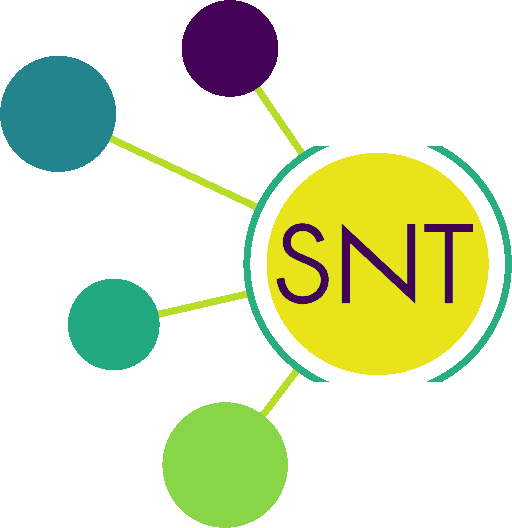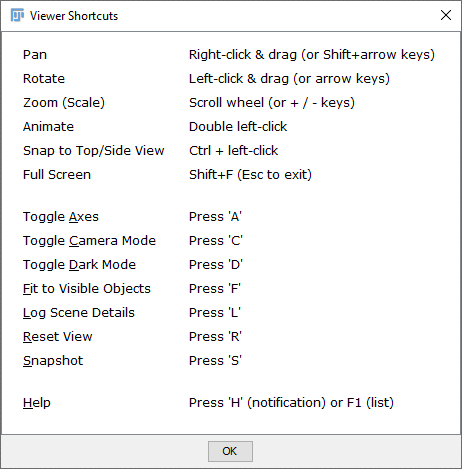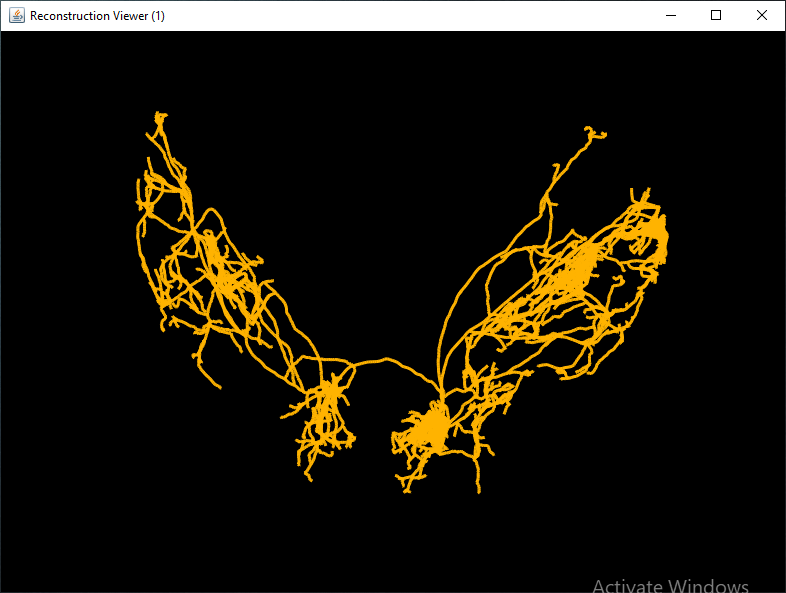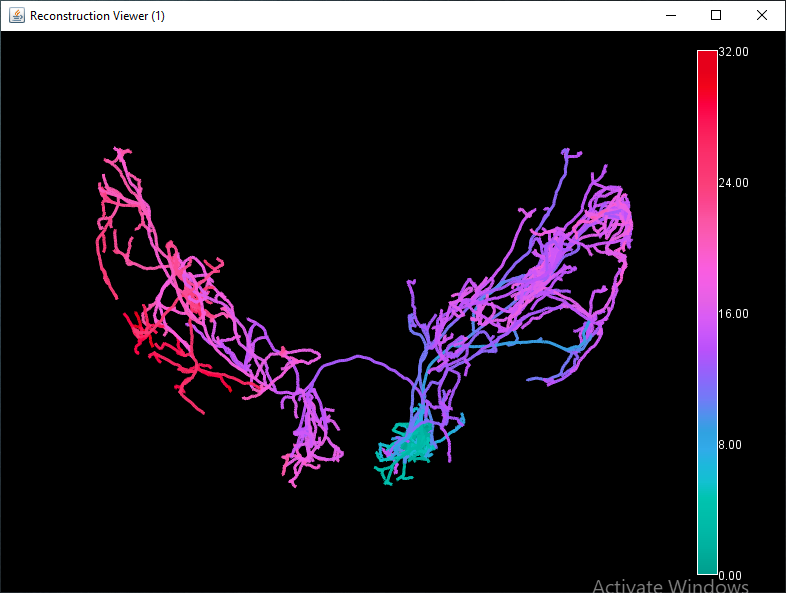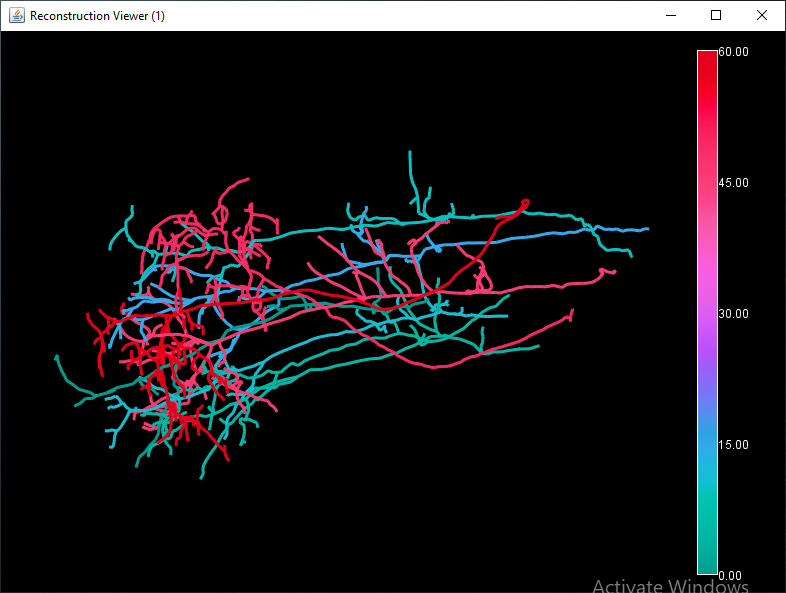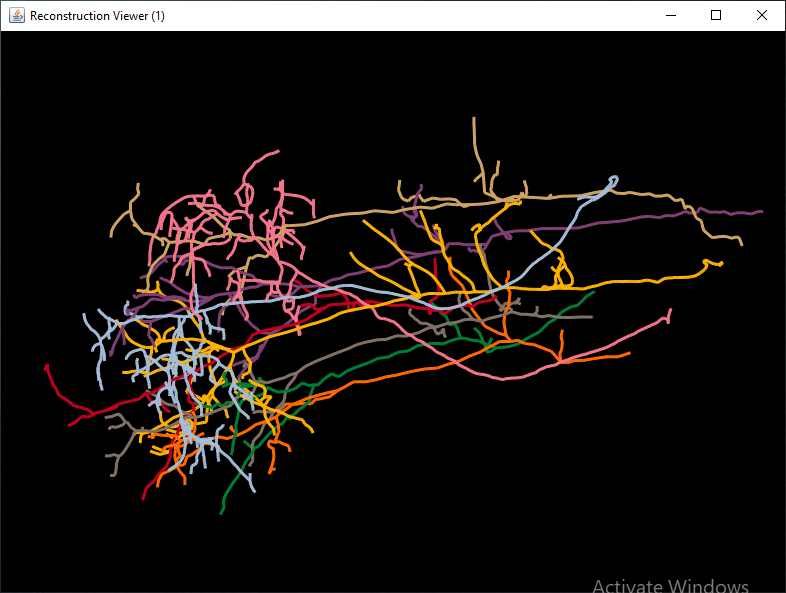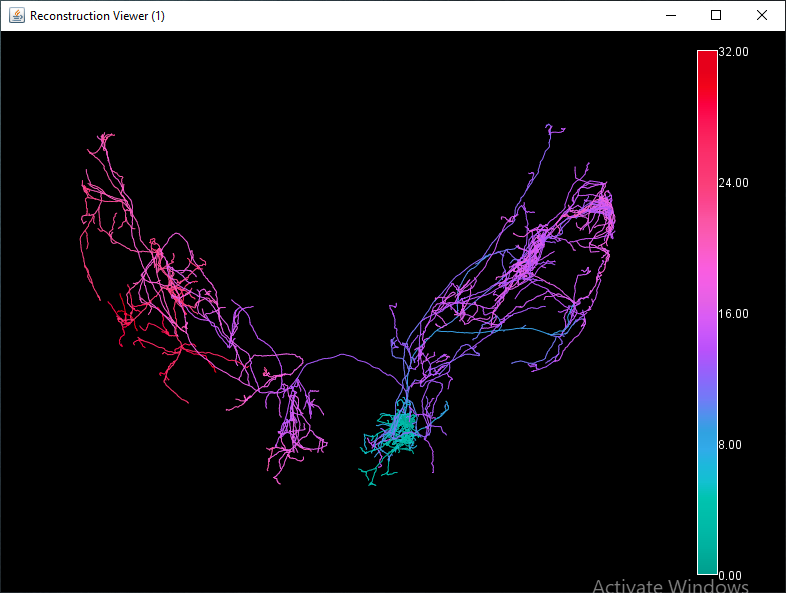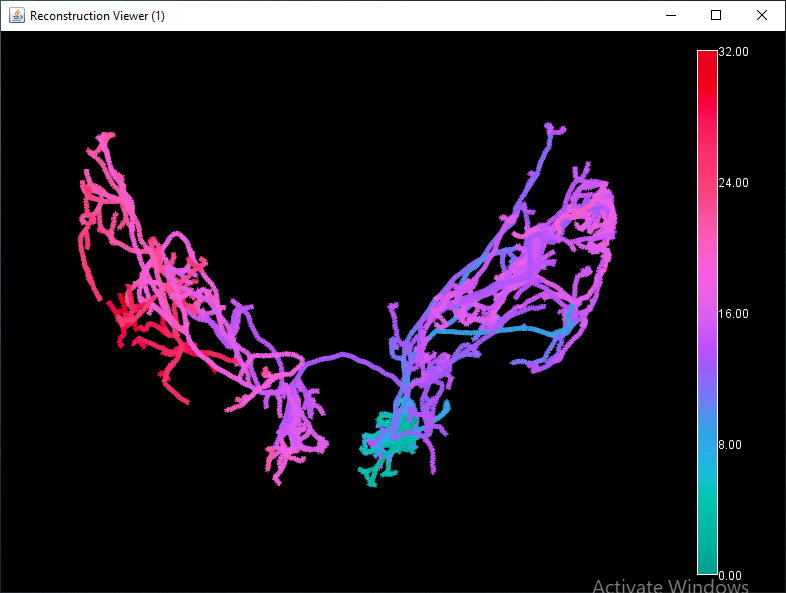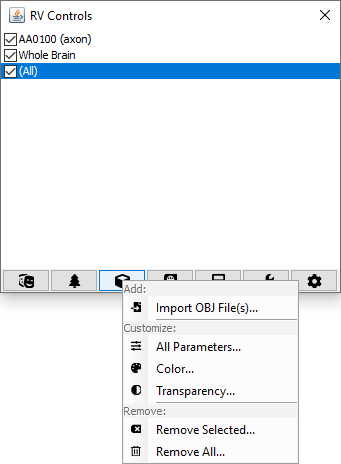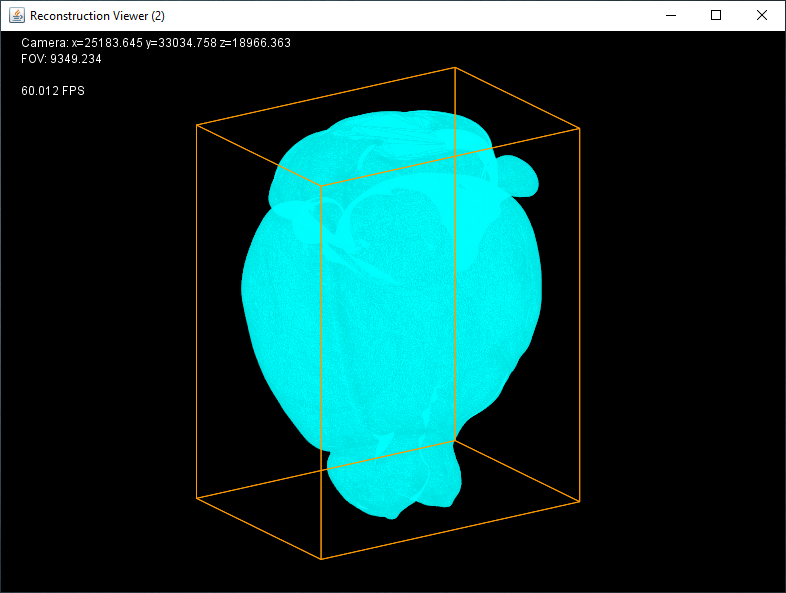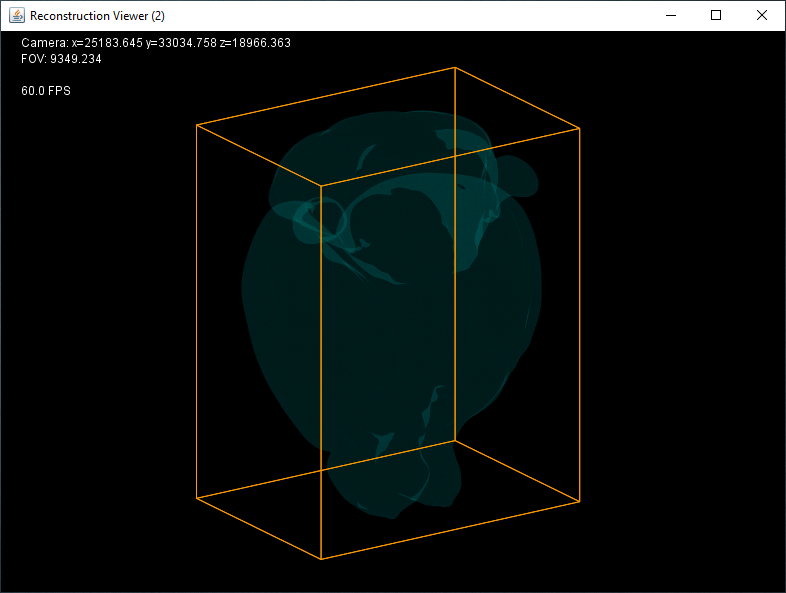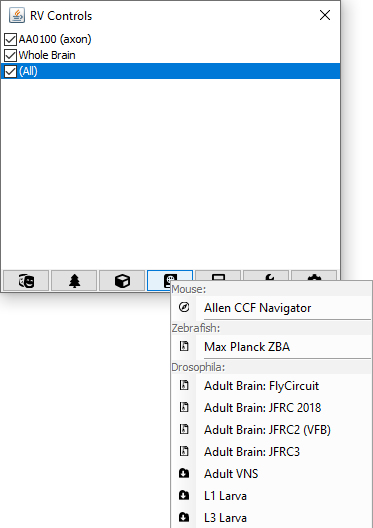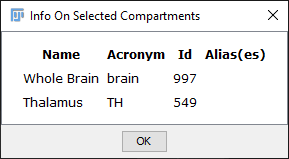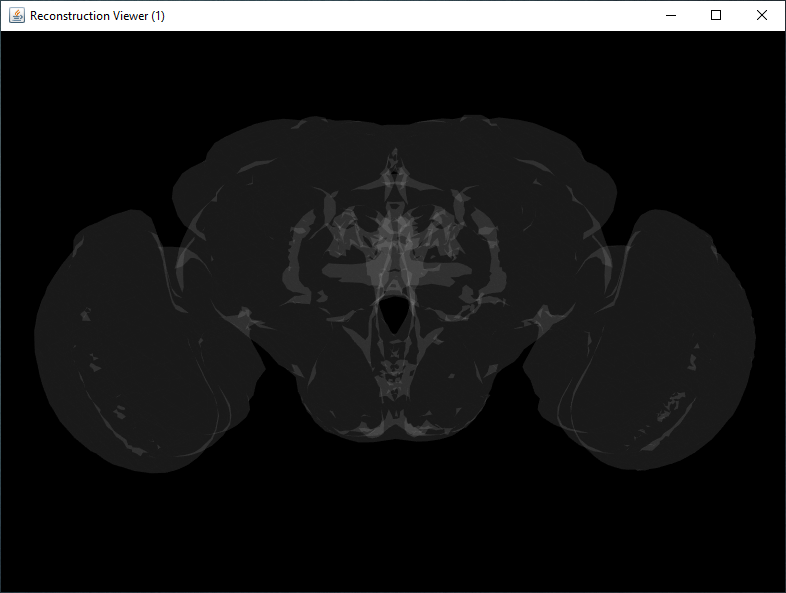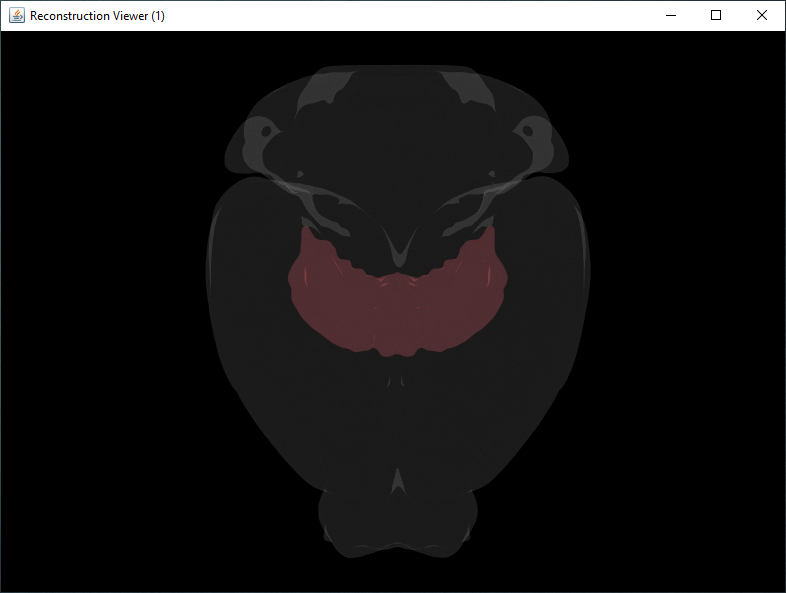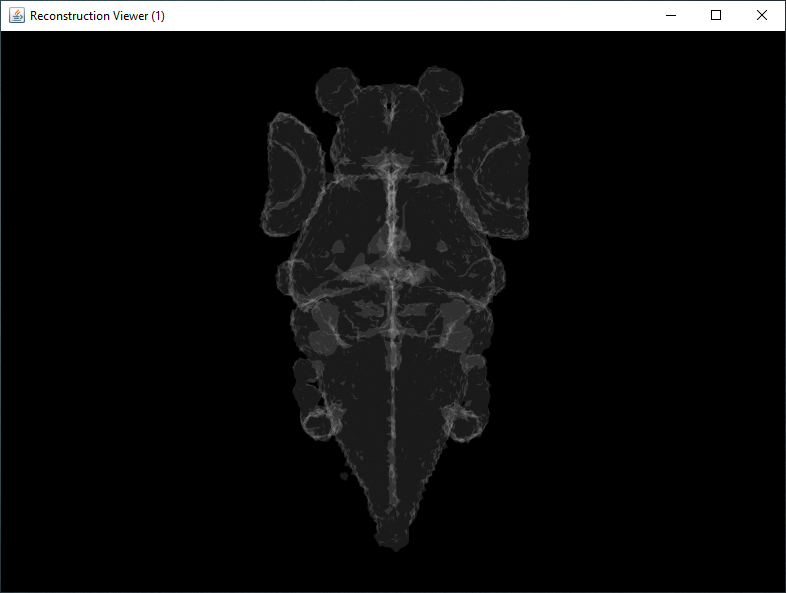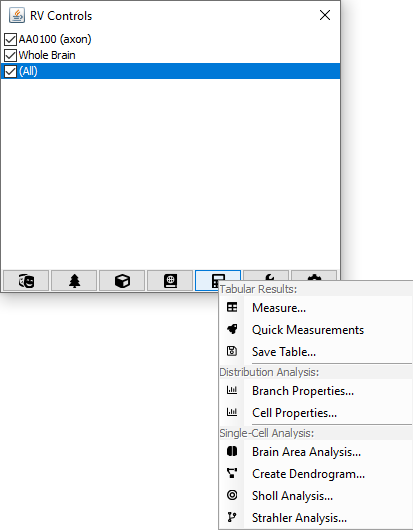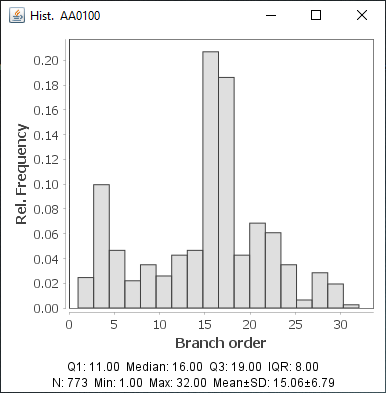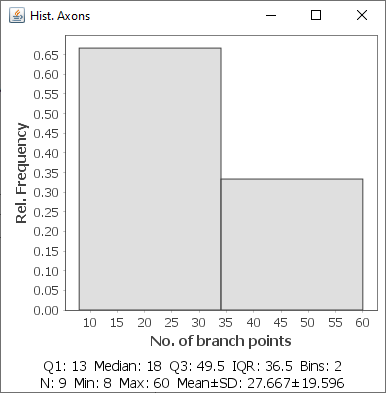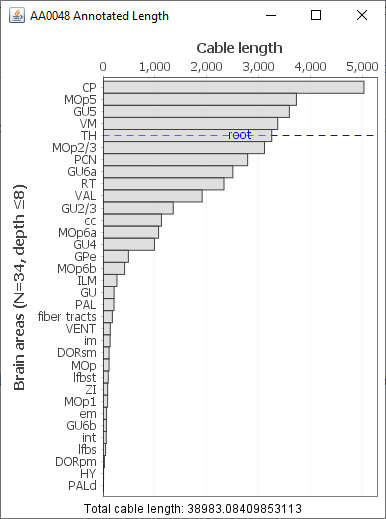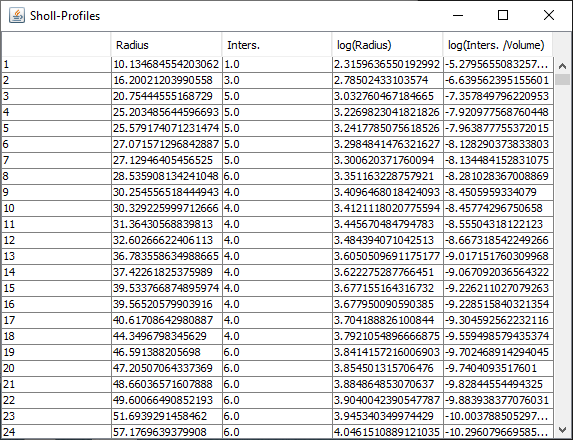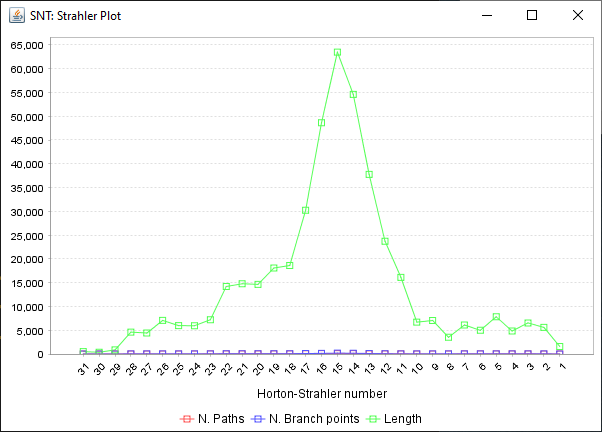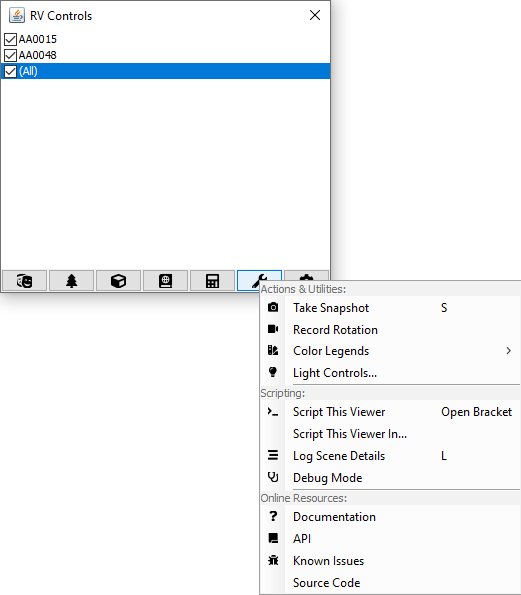SNT: Reconstruction Viewer
| Home | Manual | Walk-throughs | Screencasts | Shortcuts | Rec. Viewer | Analysis | Scripting | Modeling | FAQ |
SNT's Reconstruction Viewer is a powerful OpenGL 3D visualization tool for both surface meshes and reconstructions
- It can be used as a standalone program or from withing SNT
- Features:
- Advanced rendering supporting axes, transparency, color interpolation and path smoothing
- Interactive scenes (controlled rotations, panning, zoom, scaling, animation, "dark"/"light" mode)
- Tools for management and customization of scene elements
- Ability to render both local and remote files on the same scene
- Loading of surface meshes of several template brains (Drosophila and Allen CCF (Allen Mouse Brain Atlas))
Contents
Starting the Viewer
The Reconstruction Viewer may be used as either a standalone program or from within SNT. To open Reconstruction Viewer as a standalone program, go to Plugins › NeuroAnatomy › Reconstruction Viewer. To open the program from within SNT, use the "Open Reconstruction Viewer" option in the 3D tab of the SNT dialog. If there are any tracings currently loaded in SNT, they will be displayed in Reconstruction Viewer after opening. Note that, for performance reasons, some Path Manager changes may need to be synchronized manually from RV controls.
Scene Interaction
The display canvas supports multiple modes of interaction, including controlled rotations, panning, zoom, scaling, animation, and alternation between "dark" and "light" modes. The full list of keyboard shortcuts is found by navigating to Scene Controls › Scene Shortcuts... from RV Controls, or by pressing H (notification) or F1 (separate window) in the Viewer scene.
RV Controls
Scene Controls
This menu provides control over the rendered scene.
- Fit to Visible Objects F Computes a bounding box containing all objects of the scene and adjusts the zoom level to ensure all objects are within the camera view.
- Stretch-to-Fill Stretches the projection on the whole viewport.
- Impose Isotropic Scale › Squares the aspect ratio of the selected dimensions, leaving the others unchanged.
- Full Screen ⇧ Shift + F Enters full screen mode. To exit full screen press ⎋ Esc
- Reset Scene R
- Reload Scene ^ Ctrl + R Resets the zoom level to the default, fitting and centering all scene objects into the camera view. The current rotation setting remains unchanged. Note if some drawables in the 3D scene are not being rendered properly when this option is selected, it will prompt to rebuild the scene completely.
- Rebuild Scene... ^ Ctrl + ⇧ Shift + R Clears all objects from the scene then rebuilds them from scratch.
- Wipe Scene... Removes all objects from the scene. Note this action cannot be undone.
- Sync Path Manager Changes If the 3D scene contains any trees that are currently stored in the Path Manager, re-render these trees to reflect any change in the path structure given by the Path Manager.
Manage and Customize Neuronal Arbors
This menu relates to the import, customization and management of rendered reconstructions.
Add
- Import File... Imports and renders a single reconstruction file (".swc" or ".traces"). A color may be chosen on import or applied later using the "Customize & Adjust" sub-menu. Note that loaded files will not be listed in the Path Manager.
- Import Directory... Imports and renders all reconstruction files in a directory. A single color may be applied to all reconstructions or they may be colored uniquely. Note that loaded files will not be listed in the Path Manager.
- Import & Compare Groups... Calls the Utilities › Compare Reconstructions... command found in the main SNT dialog, allowing import, rendering and comparison of multiple groups of reconstructions.
- Load from Database › Allows import and rendering of reconstruction files fetched from the FlyCircuit, MouseLight and NeuroMorpho remote databases.
Customize & Adjust
- All Parameters... Allows customization of color, transparency and thickness parameters by neurite compartment in a single dialog.
- Color... Assigns the chosen homogeneous color to all selected reconstructions.
- Color Coding › Individual Cells... Applies morphometric color mapping to selected reconstructions. The chosen LUT is used to assign a metric-based color gradient to each reconstruction.
- Color Coding › Group of Cells... Applies morphometric color coding to a selected group of reconstruction. Note that this option uses the chosen LUT to assign a homogeneous color to each reconstruction in the group based on the chosen metric.
- Color Coding › Color Each Cell Uniquely Applies a unique homogeneous color to each selected reconstruction. Note this option will override any previously applied color mapping to the selected reconstructions.
- Thickness... Specifies a constant thickness to be applied to the selected reconstructions. Note this value will only affect how Paths are displayed in the Reconstruction Viewer.
- Translate... Specifies a translation to be applied to the selected reconstructions. To avoid overwriting data from a tracing session, this command is only available in the standalone viewer.
Remove
- Remove Selected... Deletes the selected reconstructions from the scene.
- Remove All... Deletes all reconstructions from the scene.
Manage and Customize 3D Meshes
Add
- Import OBJ File(s)... Allows import and rendering of Wavefront OBJ files, commonly used to represent surface meshes of anatomical structures.
Customize
- All Parameters... Allows adjustment of the color and transparency of the selected mesh(es) and/or their computed bounding boxes in a single menu.
- Color... Allows choice of mesh color from a generic CMYK profile.
- Transparency... Sets mesh transparency as a percentage value.
Remove
- Remove Selected... Deletes the selected mesh(es) from the scene.
- Remove All... Deletes all imported mesh(es) from the scene.
Reference Brains
This menu allows import of several Drosophila, Zebrafish and Mouse reference brains and anatomical compartments.
Mouse
- Allen CCF Navigator (Adult) Import and navigation system for the Allen Adult Mouse Common Coordinate Framework v3. Selecting this option imports the Whole Brain reference mesh, and presents a GUI allowing search, metadata retrieval, and import/rendering of ontologies contained in the Allen Common Coordinate Framework v3.
Zebrafish
- Max Planck ZBA Max Planck Zebrafish Brain Atlas
Drosophila
- Adult Brain: FlyCircuit FlyCircuit Drosophila reference brain
- Adult Brain: JFRC 2018 Janelia Farm Research Campus 2018 Drosophila reference brain
- Adult Brain: JRFC2 (VFB) Janelia Farm Research Campus Virtual Fly Brain
- Adult Brain: JFRC3 Janelia Farm Research Campus Drosophila reference brain (Version 3)
- Adult VNS Adult Drosophila ventral nervous system reference
- Larva L1 Drosophila 1st instar larval stage
- Larva L3 Drosophila 3rd instar larval stage
Analyze and Measure
This menu houses several functions to measure and analyze loaded reconstructions.
Tabular Results
- Measure... Calls the Analysis › Measure... command in the main SNT dialog, allowing selection of specific measurements, with the ability to distinguish neurite compartments. If measuring multiple tracings, the table is sortable by column.
- Quick Measurements Calls the Analysis › Quick Measurements command in the main SNT dialog, producing a table of summary statistics for the loaded reconstructions.
- Save Table... Saves all measurements computed during a session to a .csv file.
Distribution Analysis
- Branch Properties... Measures all branches of the currently selected reconstructions (without considering cell identity) and plots a histogram of the chosen metric, enabling quantification of branch properties across a population.
- Cell Properties... Measures each cell in the currently selected reconstructions individually and plots a histogram of the chosen metric, enabling comparison between individual cells.
Single-Cell Analysis
- Brain Area Analysis... Measures the amount of cable length, number of terminal nodes, or both that occur in distinct anatomical regions of the brain, with the option to restrict the analysis up to a maximum depth in the ontology hierarchy. Note that only one reconstruction may be selected at a time with this option.
- Create Dendrogram... Runs the Utilities › Create Dendrogram... command found in the main SNT dialog. See Dendrogram Viewer. Note only one reconstruction may be selected at a time with this option.
- Sholl Analysis... Runs the Sholl Analysis plugin found in Analyze › Sholl › Sholl Analysis (From Tracings). Note only one reconstruction may be analysed at a time.
- Strahler Analysis Conducts Strahler Analysis on the selected reconstruction. Note only one reconstruction may be analysed at a time.
Utilities
Actions & Utilities
- Take Snapshot S Saves a PNG image of the current scene to disk. The default directory may be changed in the Reconstruction Viewer Preferences.
- Record Rotation Animates a rotation of the current scene and saves each frame to disk. The save directory, rotation degree, duration and frames per second may be adjusted in the Reconstruction Viewer Preferences.
- Color Legends › Contains options relating to the adding and management of LUT-based color legends.
- Light Controls... Adjustments of light and shadows. Note these are currently experimental features, some of which are un-doable.
Scripting
- Script This Viewer Opens an instance of the Script Editor with pre-loaded extensible boilerplate code for advanced scripting of Reconstruction Viewer. For an example of the scripting capabilities of Reconstruction Viewer, see Scripting Reconstruction Viewer. A related script template can also be found in the Script Editor at Templates › Neuroanatomy › Analysis › Reconstruction Viewer Demo (Python).
- Script This Viewer In... Prompts for selection of scripting language before running the previous command.
- Log Scene Details L Logs detailed information about the current scene (e.g., currently visible objects, API calls, etc.) to the Console. This facilitates programmatic control over the Viewer's scene.
- Debug Mode Logs detailed information about plugin usage, including warnings and errors to the Console.
Settings
Keyboard & Mouse Sensitivity
A sub-menu with options for sensitivity of mouse and keyboard scene interaction. Note that a default shared sensitivity parameter can be specified for panning, zooming and rotating (using hotkeys) in the Global Preferences... dialog.
- Pan Accuracy › Sets the responsiveness of panning. A lower step size is more responsive.
- Rotation Steps (Arrow Keys) › Sets the number of degrees of a single rotation step. Note this preference only applies to rotations made with the Left/Right Arrow keys.
- Zoom Steps (+/-) Keys › Sets the percentage of a single zoom step.
Misc. Preferences
- Enable Hardware Acceleration Use hardware accelerated 3D graphics.
- Global Preferences... Configurable preferences for snapshot recordings, keyboard and mouse controls, and the preferred scripting language for the Viewer. Preferences persist across plugin sessions.
| Home | Manual | Walk-throughs | Screencasts | Shortcuts | Rec. Viewer | Analysis | Scripting | Modeling | FAQ |
